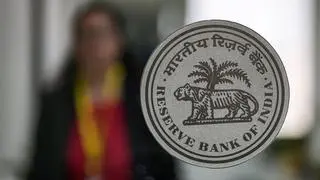The Bank of Maharashtra (BoM) reported a 34 per cent y-o-y increase in third quarter net profit at ₹1,035.51 crore on the back of healthy growth in net interest income, a moderate rise in other income, and a sharp decline in tax expenses.
The growth in bottomline comes despite the Pune-headquartered public sector bank’s provisions, including bad loans and standard/restructured assets, among others, rising 62 per cent y-o-y to ₹943 crore (₹582 crore in the year ago quarter).
The bank reported a net profit of ₹775 crore in the year-ago quarter.
Net interest income (difference between interest earned and interest expended) was up 24.55 per cent y-o-y at ₹2,466 crore (₹1,980 crore in the year ago quarter).
Other income, including fee-based income, Treasury income, and recovery in written-off accounts, rose about 6 per cent y-o-y to ₹680 crore (₹641 crore).
Net interest margin (NIM) rose to 3.95 per cent in the third quarter from 3.60 per cent in the year-ago period.
Tax expenses declined sharply to ₹34 crore (₹223 crore).
‘Milestones crossed’
AS Rajeev, MD & CEO, emphasised that the bank crossed a few milestones in the reporting quarter, logging quarterly net profit and operating profit of over Rs 1,000 crore and Rs 2,000 crore, respectively, and having one of the lowest cost-to-income ratios (at 36.04 per cent) in the industry. Operating profit was up 27 per cent y-o-y to ₹2,012 crore (₹1,580 crore).
Gross non-performing assets (GNPAs) position improved to 2.04 per cent of gross advances as of December-end 2023, against 2.19 per cent as of September-end 2023. Net NPAs position too improved a shade to 0.22 per cent of net advances against 0.23 per cent.
The bank expects a recovery of ₹400 crore–450 crore from prudentially written-off accounts in the fourth quarter, Rajeev said.
A break-up of the overall provisions shows that NPA provisions increased by about 8 per cent y-o-y to ₹581 crore (₹539 crore).
Further, provision for standard or restructured assets was at ₹254 crore (against a write-back of ₹71 crore in the year ago quarter), including ₹150 crore provision for standard agriculture advances. The bank made a ₹100 crore provision in respect of the fair valuation of recapitalisation bonds.
Gross advances increased by 20 per cent y-o-y to ₹1,88,670 crore as of December-end 2023 on the back of 27 per cent growth in RAM (retail, agriculture, and MSME) advances and about 11 per cent growth in corporate and other advances.
“Earlier, our policy was to have a loan mix of 60:40 between RAM and corporate advances. Now, we have reduced our exposure to the corporate sector by about 2 percentage points due to high competition on pricing.
“We have reduced our exposure to some of the NBFCs, and that is also one of the reasons for the decline in corporate sector loans. We have substituted these loans with RAM sector loans,” Rajeev said.
BoM reduced its exposure to NBFCs lending to certain segments of consumer credit following the RBI increasing the risk weight for such exposures. Consequently, the proportion of corporate loans declined below 40 per cent of overall loans, with RAM loans increasing beyond 60 per cent.
The proportion of RAM loans increased to 61.03 per cent in overall loans as of December 2023, against 58.58 per cent in the preceding quarter.
Deposits up
Total deposits rose by 18 per cent y-o-y to stand at ₹2,45,734 crore as of December 2023. Low-cost CASA (current account, savings account) deposits declined to 50.19 per cent of total deposits against 52.50 per cent in the year ago quarter.
The BoM Chief observed that after taking into account the net profit for the first three quarters, the capital adequacy ratio (16.85 per cent as of December-end 2023) will be much above 19 per cent.
Rajeev expects the bank to end FY24 with advances growth of 20-21 per cent and deposit growth of 14-15 per cent. It will be able to sustain a NIM in the 3.75-4 per cent range in the fourth quarter, he added.








Comments
Comments have to be in English, and in full sentences. They cannot be abusive or personal. Please abide by our community guidelines for posting your comments.
We have migrated to a new commenting platform. If you are already a registered user of TheHindu Businessline and logged in, you may continue to engage with our articles. If you do not have an account please register and login to post comments. Users can access their older comments by logging into their accounts on Vuukle.